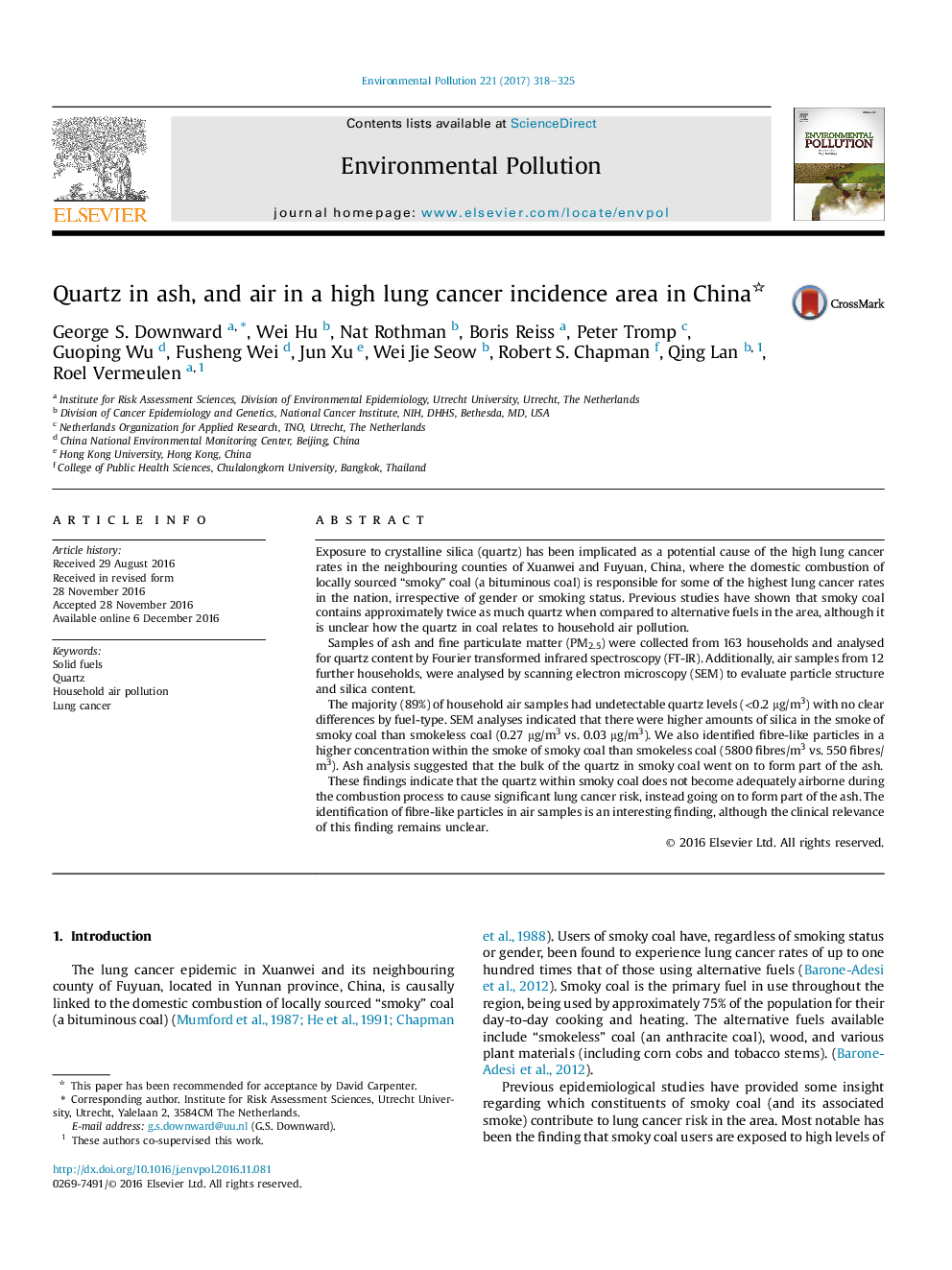| کد مقاله | کد نشریه | سال انتشار | مقاله انگلیسی | نسخه تمام متن |
|---|---|---|---|---|
| 5749477 | 1619152 | 2017 | 8 صفحه PDF | دانلود رایگان |
- The lung cancer epidemic in Xuanwei and Fuyuan is linked to the use of smoky coal.
- Exposure to quartz has been suggested as the main carcinogenic agent.
- We examine exposure to quartz through analysis of air and ash.
- We find high levels of quartz in smoky coal ash but not in air samples.
- These results suggest that exposure to quartz from coal use may be relatively low.
Exposure to crystalline silica (quartz) has been implicated as a potential cause of the high lung cancer rates in the neighbouring counties of Xuanwei and Fuyuan, China, where the domestic combustion of locally sourced “smoky” coal (a bituminous coal) is responsible for some of the highest lung cancer rates in the nation, irrespective of gender or smoking status. Previous studies have shown that smoky coal contains approximately twice as much quartz when compared to alternative fuels in the area, although it is unclear how the quartz in coal relates to household air pollution.Samples of ash and fine particulate matter (PM2.5) were collected from 163 households and analysed for quartz content by Fourier transformed infrared spectroscopy (FT-IR). Additionally, air samples from 12 further households, were analysed by scanning electron microscopy (SEM) to evaluate particle structure and silica content.The majority (89%) of household air samples had undetectable quartz levels (<0.2 μg/m3) with no clear differences by fuel-type. SEM analyses indicated that there were higher amounts of silica in the smoke of smoky coal than smokeless coal (0.27 μg/m3 vs. 0.03 μg/m3). We also identified fibre-like particles in a higher concentration within the smoke of smoky coal than smokeless coal (5800 fibres/m3 vs. 550 fibres/m3). Ash analysis suggested that the bulk of the quartz in smoky coal went on to form part of the ash.These findings indicate that the quartz within smoky coal does not become adequately airborne during the combustion process to cause significant lung cancer risk, instead going on to form part of the ash. The identification of fibre-like particles in air samples is an interesting finding, although the clinical relevance of this finding remains unclear.
110
Journal: Environmental Pollution - Volume 221, February 2017, Pages 318-325
